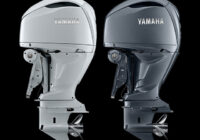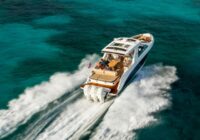Important Safety Message – do you use an engine degreaser?
If you use an engine degreaser in your enclosed engine room, it is recommended you do not use the aerosol types. Vapours will form explosive mixtures with air. Vapours are heavier than air and may travel along the ground or be moved by ventilation and ignited by heat, pilot lights, other flames and ignition sources. Recently a Hobart man in Prince of Wales Bay was tinkering around on his boat after an engine service. He thought it was an ideal time to get the engine looking spick and span and purchased four pressure pack aerosol type engine degreasers from the local store and used two to clean the engine. After rinsing the degreaser, he went to pump the bilge. On operating the switch, the spark ignited the fumes, activating what he described as a “vapour bomb” on board his 43-footer. The person was in a coma for seven weeks and has had numerous operations. He is now making a good recovery. So, make sure you are aware of these dangers when working in a confined space with pressure-pack aerosol products.
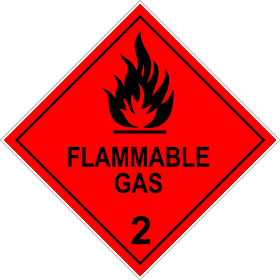
Electronic Visual Distress Signals
Exciting modern technology developed as an option to replace 2 x orange and 2 x red handheld pyrotechnic flares will be introduced shortly. An Electronic Visual Distress Signal is a signaling device that is handheld and non-toxic to the user. EVDS are used in the USA and those approved by the US Coast Guard must meet general performance requirements:
- Emit a white light that meets certain intensity requirements;
- Be capable of automatic signaling S-O-S for at least 3-5 times per minute for 6 hours;
- Contain an independent power source – batteries;
- Float in freshwater with the lens surface at or above the surface of the water;
- Be equipped with a waterproof switch; and
- Float for at least 72 hours followed by submersion in 5% by weight sodium chloride solution for at least 2 hours.
An EVDS is not a torch. The trusty old Dolphin won’t meet the specifications required.
Products approved by MAST will be uploaded to the MAST website shortly and these will meet the above requirements.
There is only one Standard available worldwide which is the RTCM 13200.00 which was developed by the Radio Technical Commission for Maritime Services. MAST acknowledges the assistance given by Mr. Ed Wendlandt President of this organisation and the late Martin (Marty) L Jackson, Staff Engineer from U.S. Coast Guard (CG-ENG-4) for the support and guidance provided to MAST on the use of these devices.
An Australian Standard will be developed, with work commencing in the coming months.
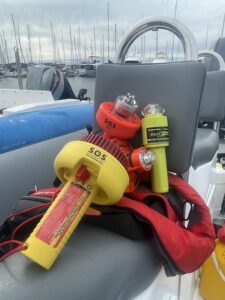
It must be remembered that EVDS will not be compulsory once new legislation is in place, but rather an option to replace the 4 x handheld flares currently required in sheltered waters and offshore. If boat owners elect to carry these devices in sheltered waters, then the legislation will require them to also carry a GPS-enabled EPIRB registered with AMSA and a VHF radio. Both of these must be in an operable condition. In coastal waters, the EVDS can be carried in lieu of the 4 x handheld flares and the parachute flares must still be carried.
In sheltered waters, MAST considers that an EVDS, EPIRB and VHF radio will give people in distress a better chance of rescue as opposed to relying just on 4 hand flares as is currently required. The EPIRB and VHF give you an opportunity to get the message out that you are in distress.
With pyrotechnic flares you are relying on someone seeing you, remembering they only last for a minute. In addition, before you leave the land you can check if your EVDS is working by simply turning it on. You cannot test a flare! MAST is aiming for the legislation to be introduced in July of this year.
Click here for more information
Unsafe Vessels
When a person registers or sells a motor boat from 1 July this year they will need to declare it is not unsafe. If the boat is being transferred the purchaser will also need to declare the boat they are purchasing is not unsafe. Both the seller and purchaser will have 14 days to notify MAST of the transfer.
For the purposes of registration and transfer, an unsafe vessel is a vessel which, in the opinion of a reasonable person, may endanger a person due to one or more of the following circumstances:
- the structural condition of the vessel, or a component of the vessel, that renders the vessel unfit to undertake a voyage for which the vessel is otherwise designed and would be, if not in that condition, capable of undertaking;
- the engine power rating of the vessel, as recommended by the manufacturer or recorded on the ABP, is being exceeded;
- the engine mass of the vessel, as recommended by the manufacturer or recorded on the ABP, is being exceeded;
- the absence of, or condition of, materials or items comprising the reserve buoyancy, or part of the reserve buoyancy, of the vessel.
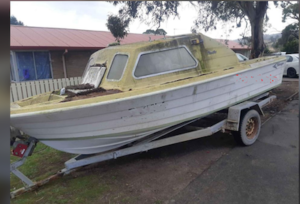
Towing Observers
Another important change from July this year is in relation to observers when towing. Currently, the age for an observer is 10 years. This is being increased to 12 years of age if that person holds a provisional boat licence or 14 years of age if they don’t. This will have important safety outcomes considering some of our confined waterways.
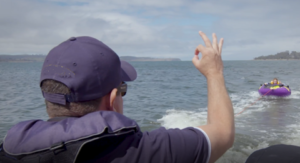
Infrastructure
The new Nubeena walkway extension has been completed at the Apex Point ramp. This initiative will give more berthing space and will be widely used over Easter.
Works at Lake Binney and Little Pine Lagoon will commence after Easter and planning for a number of other projects is currently underway. Approvals and all the requirements needed by other agencies and councils these days take much longer than 10 years ago, so the rollover of projects unfortunately is slower than we would like.
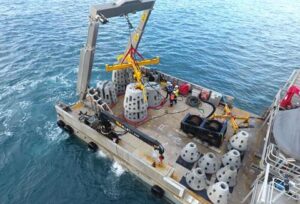
Installation of Artificial Reef at Turners Beach
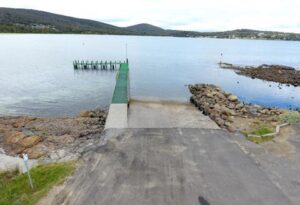
Apex Point walkway extension
The second of two artificial reefs, funded by a 2018 Election Commitment, has recently been installed. The reef, located approximately 2 nautical miles off Turners Beach in Bass Strait, is in addition to the reef that was installed in Great Bay in the D’Entrecasteaux Channel in 2022.
The Turners Beach reef consists of over one hundred precast concrete modules built to two different designs that were lowered to the seabed from the vessel Silver Star via a gantry and winch. The module installation included a combination of quad, twin and single module lifts. The reef will eventually provide habitat for a range of species and is best accessed from the Ulverstone boat ramp or from ramps within the Mersey River.
The minimum water depth over the reef is 12.1m at Lowest Astronomical Tide (LAT).
Reef location coordinates:
- NW 41⁰ 07.346’S / 146⁰ 13.219’E
- NE 41⁰ 07.346’S / 146⁰ 13.366’E
- SE 41⁰ 07.451’S / 146⁰ 13.366’E
- SW 41⁰ 07.451’S / 146⁰ 13.219’E
For more information visit mast.tas.gov.au








